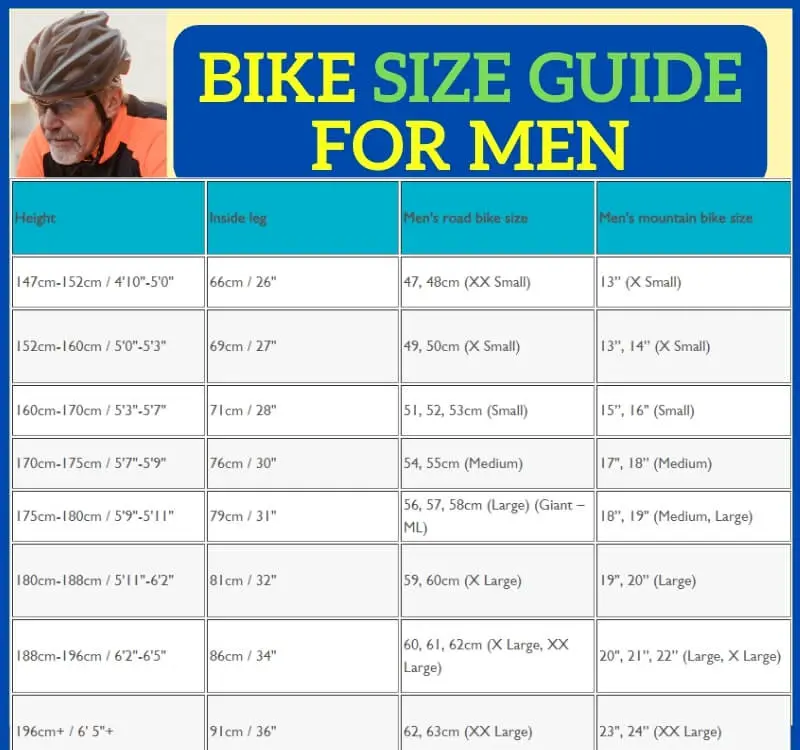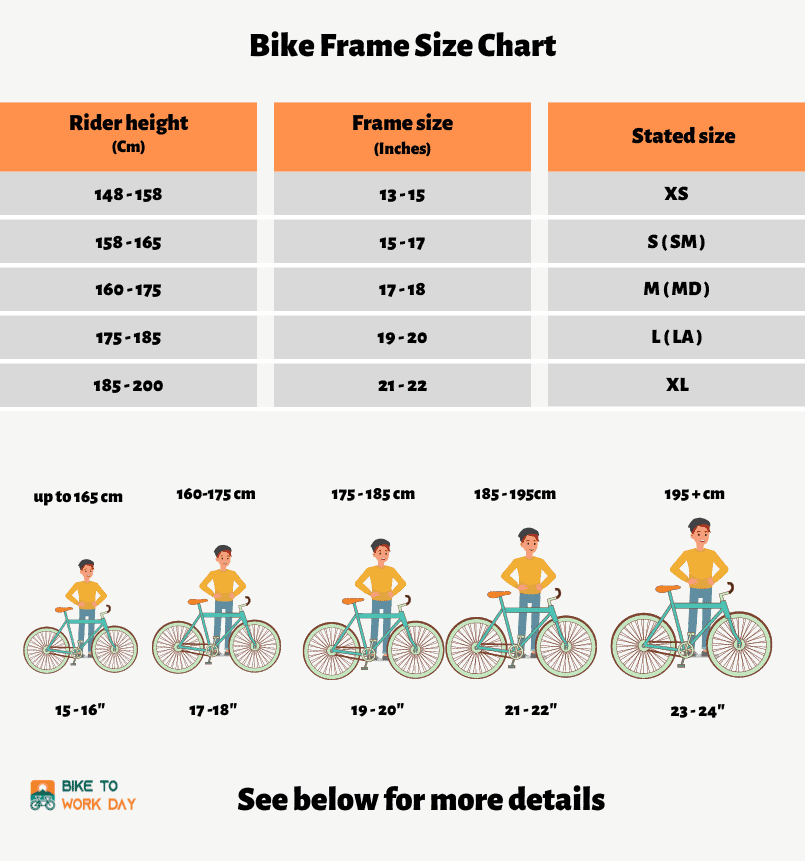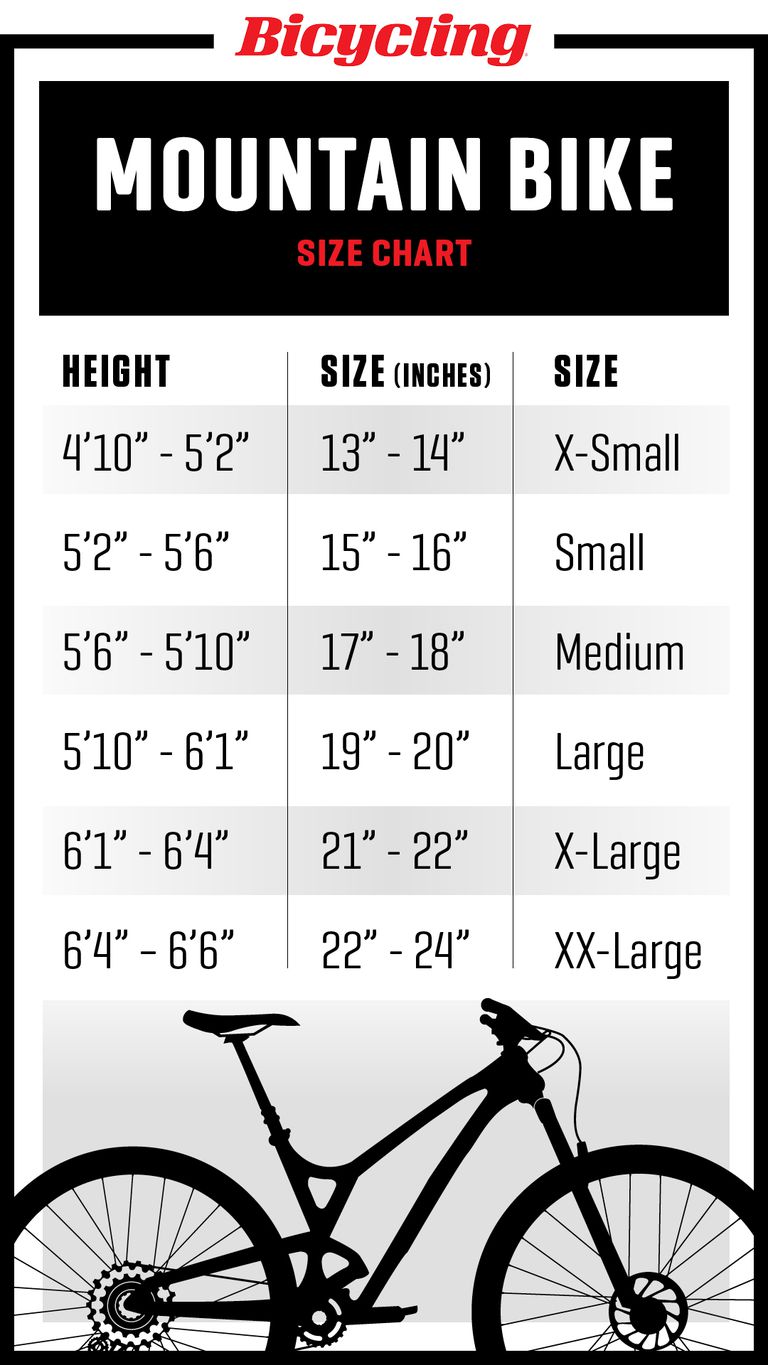Why Bike Size Matters: Avoiding Discomfort and Injury
Choosing the right bike size is crucial for a comfortable and enjoyable riding experience. A bike that is too small or too large can lead to discomfort, injury, and decreased performance. When a bike is not properly fitted to the rider, it can cause a range of issues, including back and neck pain, numbness in the hands and feet, and decreased control over the bike.
One of the most common mistakes riders make is not considering their individual needs when selecting a bike size. Many riders assume that a bike that fits their friend or family member will also fit them, but this is not always the case. Bike size is highly dependent on the rider’s height, inseam, and riding style, making it essential to take the time to find the right fit.
So, how big of a bike do you need? The answer depends on several factors, including your height, inseam, and the type of bike you are riding. For example, a road bike and a mountain bike have different sizing requirements due to their unique geometries and riding styles. Understanding these differences is key to finding a bike that fits comfortably and performs well.
A bike that is too small can cause the rider to be hunched over, leading to discomfort and decreased control over the bike. On the other hand, a bike that is too large can cause the rider to overstretch, leading to fatigue and decreased performance. By taking the time to find the right bike size, riders can avoid these issues and enjoy a more comfortable and enjoyable riding experience.
In addition to comfort and performance, bike size also plays a critical role in safety. A bike that is not properly fitted to the rider can increase the risk of accidents and injuries. For example, a bike that is too small can cause the rider to lose control, while a bike that is too large can cause the rider to overcorrect, leading to a loss of balance.
By considering the importance of bike size and taking the time to find the right fit, riders can enjoy a more comfortable, enjoyable, and safe riding experience. Whether you are a seasoned pro or just starting out, finding the right bike size is essential for getting the most out of your ride.
Understanding Bike Sizing: Key Measurements to Consider
When it comes to determining bike size, there are several key measurements to consider. These measurements will help you find a bike that fits comfortably and performs well. So, how big of a bike do you need? Let’s take a closer look at the key measurements to consider.
Standover height is one of the most important measurements to consider when determining bike size. This is the distance from the ground to the top of the bike’s top tube. A good rule of thumb is to have at least 1-2 inches of clearance between the top of the top tube and your inseam. This will ensure that you can stand over the bike with both feet flat on the ground.
Inseam is another critical measurement to consider. This is the distance from the ground to the crotch seam of your pants. A bike that is too small will cause you to be hunched over, while a bike that is too large will cause you to overstretch. By considering your inseam, you can find a bike that allows you to maintain a comfortable riding position.
Reach is also an important measurement to consider. This is the distance from the saddle to the handlebars. A bike with a reach that is too long will cause you to stretch too far forward, while a bike with a reach that is too short will cause you to be too upright. By finding a bike with a reach that is just right, you can maintain a comfortable riding position and avoid fatigue.
Other measurements to consider include wheel size, seat tube length, and head tube angle. These measurements will affect the overall fit and performance of the bike. For example, a bike with a larger wheel size will have a longer wheelbase, which can affect the bike’s stability and handling.
By considering these key measurements, you can find a bike that fits comfortably and performs well. Whether you’re a seasoned pro or just starting out, understanding bike sizing is essential for getting the most out of your ride. So, take the time to consider your measurements and find a bike that is just right for you.
Remember, bike sizing is not a one-size-fits-all approach. What works for one person may not work for another. By considering your individual measurements and needs, you can find a bike that is tailored to your unique riding style and preferences.
How to Measure Yourself for a Bike: A Step-by-Step Guide
Measuring yourself for a bike can seem like a daunting task, but it’s a crucial step in finding the right bike size. By taking the time to measure yourself accurately, you can ensure a comfortable and proper fit. So, how big of a bike do you need? Let’s break down the steps to measure yourself for a bike.
Step 1: Measure Your Inseam
Start by measuring your inseam, which is the distance from the ground to the crotch seam of your pants. You can use a tape measure or a ruler to take this measurement. Stand against a wall with your feet shoulder-width apart and your back straight. Place the tape measure or ruler against the wall and measure the distance from the floor to the crotch seam.
Step 2: Measure Your Height
Next, measure your height. Stand against a wall with your feet shoulder-width apart and your back straight. Use a tape measure or a ruler to measure the distance from the floor to the top of your head.
Step 3: Measure Your Arm Length
Measure the length of your arm from the center of your back to the tip of your middle finger. This will give you an idea of your reach and help you determine the correct handlebar height.
Step 4: Use Online Bike Size Calculators
Once you have taken your measurements, you can use online bike size calculators to determine your ideal bike size. These calculators take into account your measurements and provide a recommended bike size based on your data.
Step 5: Consider Your Riding Style
Finally, consider your riding style and preferences. If you’re a casual rider, you may prefer a more upright riding position, while a competitive rider may prefer a more aggressive position.
By following these steps, you can accurately measure yourself for a bike and find the right size for a comfortable and proper fit. Remember, bike sizing is not a one-size-fits-all approach, so take the time to measure yourself and find the perfect bike for your needs.
When using online bike size calculators, keep in mind that different manufacturers may have slightly different sizing charts. It’s always a good idea to consult with a professional bike fitter or visit a local bike shop to ensure the best possible fit.
Mountain Bike Sizing vs. Road Bike Sizing: What’s the Difference?
When it comes to choosing the right bike size, one of the most important factors to consider is the type of bike you’re looking for. Mountain bikes and road bikes have different sizing requirements due to their unique geometries and riding styles. So, how big of a bike do you need for mountain biking versus road biking?
Mountain Bike Sizing
Mountain bikes have a more upright riding position and a slacker head tube angle, which allows for more stability and control on rough terrain. As a result, mountain bike sizing tends to be more relaxed, with a longer wheelbase and a lower standover height. This allows riders to maintain a comfortable position and avoid feeling too stretched out or too cramped.
When choosing a mountain bike size, consider the following factors:
Wheel size: Mountain bikes typically have larger wheels (26-29 inches) to provide more stability and control on rough terrain.
Standover height: Mountain bikes have a lower standover height to allow for more clearance and stability on technical trails.
Reach: Mountain bikes have a shorter reach to provide more control and maneuverability on tight trails.
Road Bike Sizing
Road bikes, on the other hand, have a more aggressive riding position and a steeper head tube angle, which allows for more speed and efficiency on paved roads. As a result, road bike sizing tends to be more aggressive, with a shorter wheelbase and a higher standover height. This allows riders to maintain a more aerodynamic position and generate more power.
When choosing a road bike size, consider the following factors:
Wheel size: Road bikes typically have smaller wheels (700c) to provide more speed and efficiency on paved roads.
Standover height: Road bikes have a higher standover height to allow for more clearance and aerodynamics on flat roads.
Reach: Road bikes have a longer reach to provide more comfort and control on long rides.
Ultimately, the key to finding the right bike size is to consider your individual needs and preferences. Whether you’re a mountain biker or a road biker, make sure to take the time to research and test ride different bikes to find the perfect fit.
Real-World Examples: Bike Size Charts for Popular Brands
When it comes to choosing the right bike size, it’s helpful to see how different manufacturers approach bike sizing. Here are some real-world examples of bike size charts for popular brands, including Trek, Specialized, and Giant.
Trek Bike Size Chart
Trek offers a range of bike sizes, from 14 to 24 inches, to fit riders of different heights and inseam lengths. According to Trek’s size chart, a rider with a height of 5’8″ and an inseam of 30 inches would fit best on a 17-inch frame.
Specialized Bike Size Chart
Specialized also offers a range of bike sizes, from 16 to 24 inches, to fit riders of different heights and inseam lengths. According to Specialized’s size chart, a rider with a height of 5’8″ and an inseam of 30 inches would fit best on a 18-inch frame.
Giant Bike Size Chart
Giant offers a range of bike sizes, from 15 to 23 inches, to fit riders of different heights and inseam lengths. According to Giant’s size chart, a rider with a height of 5’8″ and an inseam of 30 inches would fit best on a 17-inch frame.
As you can see, different manufacturers have slightly different sizing charts, which can make it confusing to determine the right bike size. However, by considering your height, inseam, and riding style, you can find a bike that fits comfortably and performs well.
So, how big of a bike do you need? By using these bike size charts as a guide, you can find a bike that fits your unique needs and preferences. Remember to always test ride a bike before purchasing to ensure a comfortable fit.
In addition to using bike size charts, it’s also important to consider other factors, such as your riding style and the type of bike you’re looking for. For example, if you’re looking for a mountain bike, you may want to consider a bike with a more relaxed geometry and a longer wheelbase.
Test Ride Before You Buy: Ensuring a Comfortable Fit
Once you’ve narrowed down your options and found a bike that seems like a good fit, it’s essential to test ride it before making a purchase. This will give you a chance to see how the bike feels and handles in real-world conditions.
When test riding a bike, pay attention to the following factors:
Comfort: Does the bike feel comfortable to ride? Are the saddle and handlebars at a comfortable height?
Handling: How does the bike handle? Is it stable and responsive, or does it feel twitchy and unpredictable?
Fit: Does the bike fit your body? Are the pedals and saddle at a comfortable distance from each other?
Performance: How does the bike perform? Is it fast and efficient, or does it feel sluggish and unresponsive?
By test riding a bike, you can get a sense of whether it’s the right fit for you. Don’t be afraid to ask the salesperson questions or to take the bike for a spin around the block.
So, how big of a bike do you need? By test riding a bike, you can find out whether it’s the right size for you. Remember, a properly fitting bike is essential for comfort, performance, and safety.
In addition to test riding a bike, it’s also important to consider other factors, such as your riding style and the type of bike you’re looking for. For example, if you’re looking for a mountain bike, you may want to consider a bike with a more relaxed geometry and a longer wheelbase.
By taking the time to test ride a bike and considering your individual needs and preferences, you can find a bike that fits comfortably and performs well. Whether you’re a seasoned cyclist or just starting out, a properly fitting bike is essential for a comfortable and enjoyable ride.
Common Mistakes to Avoid When Choosing a Bike Size
When choosing a bike size, there are several common mistakes to avoid. By being aware of these mistakes, you can ensure that you find a bike that fits comfortably and performs well.
Relying Too Heavily on Online Size Charts
One common mistake is relying too heavily on online size charts. While these charts can provide a general idea of the right bike size, they are not always accurate. Different manufacturers have different sizing standards, and online size charts may not take into account your individual needs and preferences.
Neglecting to Consider Personal Comfort and Riding Style
Another common mistake is neglecting to consider personal comfort and riding style. A bike that is too small or too large can be uncomfortable to ride, and may not provide the performance you need. By considering your personal comfort and riding style, you can find a bike that fits your needs and preferences.
Not Considering the Type of Bike
Not considering the type of bike is another common mistake. Different types of bikes, such as mountain bikes and road bikes, have different sizing requirements. By considering the type of bike you need, you can find a bike that fits your needs and preferences.
Not Test Riding the Bike
Not test riding the bike is another common mistake. Test riding a bike is essential to ensure that it fits comfortably and performs well. By test riding a bike, you can get a sense of how it feels and handles, and make any necessary adjustments.
So, how big of a bike do you need? By avoiding these common mistakes, you can find a bike that fits comfortably and performs well. Remember to consider multiple factors, including your height, inseam, and riding style, and to test ride the bike before making a purchase.
By being aware of these common mistakes, you can ensure that you find a bike that meets your needs and preferences. Whether you’re a seasoned cyclist or just starting out, a properly fitting bike is essential for a comfortable and enjoyable ride.
Conclusion: Finding Your Perfect Bike Size for a Comfortable Ride
Choosing the right bike size is crucial for a comfortable and enjoyable ride. By considering multiple factors, including your height, inseam, and riding style, you can find a bike that fits your needs and preferences.
Remember, a properly fitting bike is essential for avoiding discomfort, injury, and decreased performance. By taking the time to measure yourself, research different bike sizes, and test ride a bike, you can find the perfect fit for a comfortable and enjoyable ride.
So, how big of a bike do you need? By following the tips and guidelines outlined in this article, you can find a bike that fits your unique needs and preferences. Whether you’re a seasoned cyclist or just starting out, a properly fitting bike is essential for a comfortable and enjoyable ride.
In conclusion, finding the right bike size is a crucial step in ensuring a comfortable and enjoyable ride. By considering multiple factors, taking the time to measure yourself, and test riding a bike, you can find the perfect fit for a comfortable and enjoyable ride.
By following the tips and guidelines outlined in this article, you can find a bike that fits your unique needs and preferences. Remember, a properly fitting bike is essential for avoiding discomfort, injury, and decreased performance. Happy cycling!








